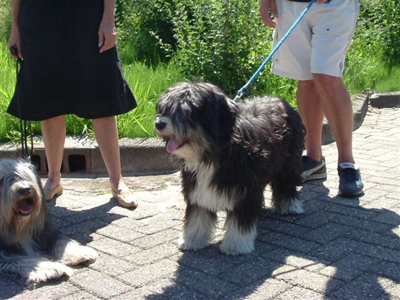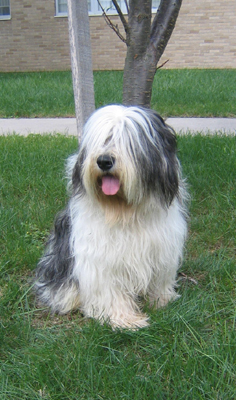

Prezes Bunkier van PON Nouraika - owner: Gerda Steekers
|
When Your Pon has fatty tumors
Occasionally, PON owners will post to Yahoogroups about bumps or fatty tumors they have come across while grooming their PONS. and inquire if this is common in the breed. The answer is not uncomplicated, but studies indicate that overweight dogs are more susceptible to fatty tumors called lipomas. These lipomas have the consistency of a baggy filled with water and may be found all over a PON's body. For newbie owners this is scary and may result in a quick visit to the vet. More experienced owners take these lipomas in stride and carefully monitor them over a time period. I have found an excellent article on various types of skin issues and advise all owners to read all details and consult with their vets about possible treatments for them. There is an alternative theory, that some of these fatty tumors may also be a type of allergic reaction to something in food or the environment. Regardless of cause, professional treatment is strongly suggested.
http://www.dogfocused.com/dog-health/non-cancerous-and-fatty-tumors.php
Lipomas (Fatty Tumors)
Lipomas, or fatty tumors, are the most common non-cancerous tumor found in dogs. Lipomas are deposits of fatty tissue under the skin that are separated from surrounding body fat by a fibrous covering. Fatty tumors are usually round and smooth. Lipomas are not usually painful, but when they become so large that they interfere with a dog's comfort or mobility they should be removed surgically. Fatty tumors are most common in obese female dogs. Because some fatty tumors are cancerous, a needle biopsy of the growth may be performed. A needle attached to a syringe is inserted into the fatty tumor and some of the contents removed. The contents are spread onto a microscope slide and examined for the presence of cancer cell. Cysts Cysts are common non-cancerous tumors that can occur anywhere on or in a dog's body. Sebaceous cysts are benign tumors that can reach an inch in size. Sebaceous cysts are filled with dead skin cells and sebum (oil) that produces the cheesy substance seen when the cyst is ruptured, either surgically or accidentally. While usually non-cancerous, cysts may require drainage or surgical removal to prevent infection. Cocker Spaniels are especially prone to sebaceous cysts. Histiocytomas Histiocytomas are very red, dome-shaped growths that appear on the ears, face and feet of younger dogs, most often those under age two. The sudden development of histiocytomas can be alarming. Histiocytomas are often painful to the touch, but not generally associated with cancer. The exact cause of histiocytomas is unknown, but a viral cause is suspected. Most histiocytomas resolve on their own within three months, but because they can be itchy a topical steroid may be prescribed. If the growth is causing pain or intense scratching that doesn't resolve with topical steroids, surgical removal is warranted. Histiocytomas are common in Boxers, Dachshunds, Labrador Retrievers and Staffordshire Terriers. Perianal Gland Tumors Perianal gland tumors, or perianal adenomas, are most common in un-neutered male dogs. Perianal gland tumors occur in the cells of the oil glands at the base of the tail around the anus. While most perianal gland tumors are non-cancerous (adenoma), a biopsy may be required to rule out a cancerous form of perianal gland tumor (adenocarcinoma). Perianal gland tumors can cause pain or become infected—their location makes infection quite likely. Because perianal adenomas are stimulated by the hormone testosterone, most veterinarians will recommend neutering the dog. The tumor(s) may be removed at the time of neutering or at a later date. If the tumors are small, they can often be "frozen" with liquid nitrogen. Other Non-Cancerous Tumors A number of ot her non-cancerous tumors affect dogs. These include:
While most non-cancerous tumors are safe, there is always the slim possibility that apparently benign tumors will become malignant. The best course of action is to have a veterinarian examine any growths on your dog's body and decide whether or not a biopsy is necessary. Like many things, when it comes to non-cancerous tumors, being safe is much better than being sorry
|

Chris Gibson's zielonagorapons.com
ponbreeders/polishculture/faq/earcleaner/skin/registry/mudseason/anesthesia